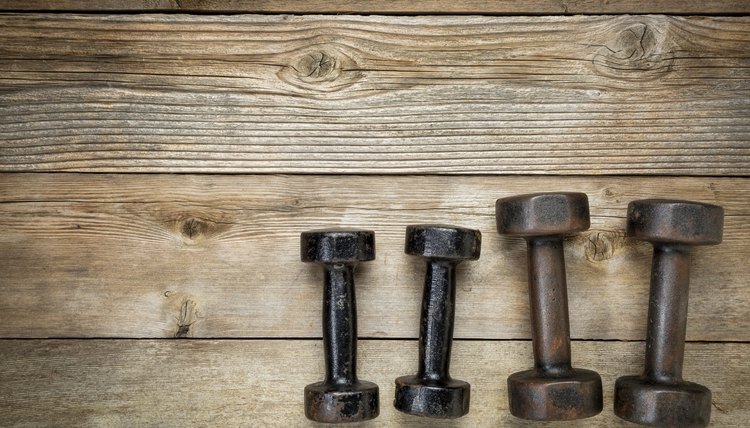What does fact checked mean?
At SportsRec, we strive to deliver objective content that is accurate and up-to-date. Our team periodically reviews articles in order to ensure content quality. The sources cited below consist of evidence from peer-reviewed journals, prominent medical organizations, academic associations, and government data.
The information contained on this site is for informational purposes only, and should not be used as a substitute for the advice of a professional health care provider. Please check with the appropriate physician regarding health questions and concerns. Although we strive to deliver accurate and up-to-date information, no guarantee to that effect is made.
Free-Weights Exercises for Flexor Carpi Ulnaris

The flexor carpi ulnaris is one of the muscles that make up your forearm. Your forearm works in conjunction with other upper-body muscles as you perform activities that involve gripping, lifting, pushing and pulling. For example, your forearms work in conjunction with your biceps and upper back when you bend over to pick up a heavy object from the floor or when performing pullups. Free-weight exercises for the flexor carpi ulnaris strengthen your wrists and improve your grip.
Forearm Anatomy
The flexor carpi ulnaris originates in the bottom end of the humerus, or upper arm bone, running along the outside of the forearm to insert into the base of the fifth metacarpal, or finger bone. The flexor carpi ulnaris flexes your hand at the wrist, bringing your palm toward your forearm, and adducts, or bends your wrist outward. Free-weight exercises that mimic these actions work your flexor carpi ulnaris.
Sit and Curl
Barbell wrist curls target your inner forearms, or wrist flexors. These include the flexor carpi ulnaris. Sit on a bench and grasp a barbell with an underhand shoulder-width grip. Rest your forearms on your thighs with the back of your hands hanging over your knees. Loosen your grip and allow the barbell to roll down to your fingers as the back of your hands drop toward your knees. Tighten your grip and raise the barbell by flexing your wrists and raising your knuckles as high as you can. To work each arm independently, perform the exercise with a pair of dumbbells. Use light weights that allow you to do 15 to 20 reps.
One of Few
There are few free-weight exercises that involve bending your wrist outward to target your flexor carpi ulnaris. One such exercise is the dumbbell ulnar deviation. With your arm hanging down by your side, grasp a dumbbell with your thumb pushed against the inside of one of the weight plates. Bend your wrist, moving your little finger toward your outer forearm. Use a weight that allows you to do 15 to 20 repetitions.
Reverse Curls and Stabilizer Muscles
The flexor carpi ulnaris helps to stabilize your elbow joint. Barbell reverse curls primarily target the brachioradalis, or upper forearm, with the flexor carpi ulnaris kicking in as stabilizers. To do reverse curls, stand and grasp a barbell with a shoulder-width overhand grip. With your elbows tight to your side, curl the barbell upward until your forearms are vertical. Use a pair of dumbbells to work each arm unilaterally.
References
Writer Bio
Ollie Odebunmi's involvement in fitness as a trainer and gym owner dates back to 1983. He published his first book on teenage fitness in December 2012. Odebunmi is a black belt in taekwondo and holds a bachelor's degree in economics from Kingston University in the United Kingdom.
